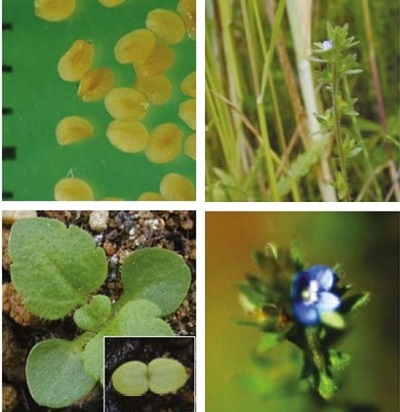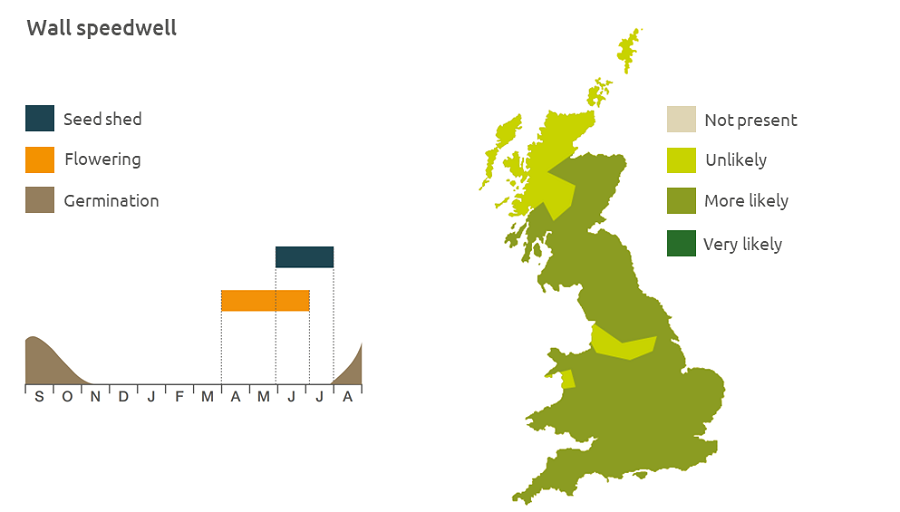- Home
- Knowledge library
- Distribution and biology of wall speedwell in the UK
Distribution and biology of wall speedwell in the UK
Wall speedwell is common on arable land but not particularly competitive. Find out how to identify and control it.
Overview
Wall speedwell (Veronica arvensis) is very common on arable land, particularly in winter cereals, but is not competitive in vigorous cereal crops. It does not persist in grass leys. Although it can root from stem fragments, this does not occur in the field. Seeds shed in the summer can germinate in the following autumn, giving rise to overwintering plants, or germinate in the following spring. Seeds are moved by humans or cattle or air currents.
Description
It is a short plant 3–15 cm tall, branched and stiffly upright with small oval leaves. The stem is hairy. The very small, intensely blue flowers are borne on short stalks in the leaf axils.
Key features
Plant: The leaves are small and long, oval in shape.
Fruit: It is heart-shaped.

Location and life cycle

Geographic distribution
Wall speedwell grows to an altitude of 800 m and is usually found on arable land, tracks, waste ground, heaths, grasslands and gravelled paths.
Soil type
It likes nutrient-rich moderately acidic loose loams or sandy loams with some humus.
Seed statistics
- Seed longevity: 1–5 years
- Seed weight: 0.25 mg
- Seeds/flower: 15
- Seeds/plant: 0–17,000
Management
Wall speedwell does not thrive in dense crops. It is not affected by minimum tillage. Cereal crops may be harrowed early in the season and row crops can be hoed.
For advice on herbicides, please speak with your agronomist or adviser.
When was this information last updated?
This page is based on content from the encyclopaedia of arable weeds publication. Since it was first released in 2008, the publication has been redesigned several times but not revised. However, it remains a good foundation for general information on the distribution and biology of weeds.

